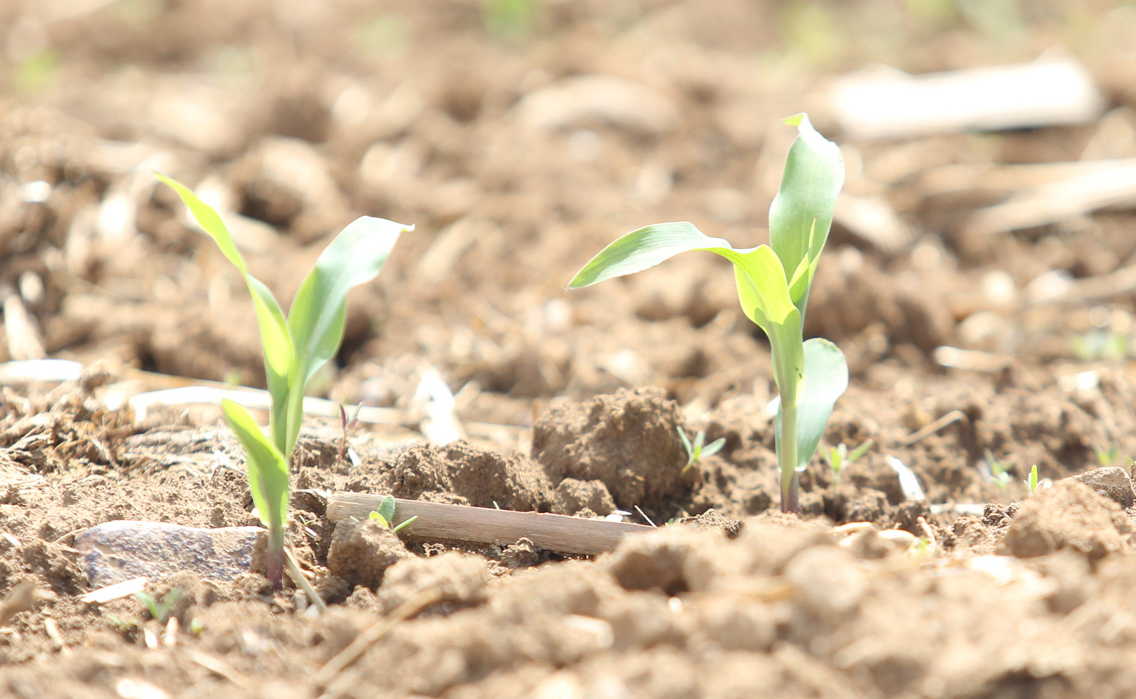Take a Holistic Approach to Plant Nutrition

Yearlong nutrient management can help keep your soil and crops — and your ROI and yield potential — healthy. Work with your trusted advisor this spring to assess nutrient needs. Use the tools available to monitor nutrient levels all season to help ensure you meet your operational goals. Here are a few steps to keep in mind.
1. Consider what happened last season.
Weather, commodity prices and farm economics can all shift from year to year. However, last year’s nutrition plan can be used as a foundation to build on for the upcoming season. Review nutrient levels and yield data from 2017 to start enhancing your nutrition program in 2018.
2. Delve into response-to-nitrogen scores.
If you apply some of your nitrogen in the fall, be sure to include a stabilizer with it so it will still be there in the spring. In order to leverage a hybrid with a high response-to-nitrogen score to your advantage, it is important to split up your nitrogen applications. Use in-season approaches to help make those decisions as needed to optimize plant nitrogen needs. Soil nitrate samples, tissue samples, in-season imagery from the R7® Tool or a crop modeling tool such as the R7® Field Forecasting Tool can help determine your nitrogen status.
3. Evaluate nutrient levels.
Managing nutrients closely throughout the year allows you to make better decisions about crop rotation and to be more nimble with nutrient timing. Use available tools including soil and tissue sampling, and have conversations with your agronomist, to be sure nutrient applications are made based on sampling results and return on investment potential.
4. Apply a plant growth regulator.
Plant growth regulators such as Ascend® and Optify®/Stretch encourage early plant germination and emergence, a robust root system, larger leaves, and thicker stems. Use data from your local Winfield United supplier to help determine what PGR may be best for your operation. For example, in a five-year average across 294 Answer Plot® locations, Ascend® PGR paired with starter fertilizer and zinc in-furrow delivered a 4.94 bu/A average positive yield response.*
5. Keep an eye on your tablet.
Use ag technology to monitor crop progress. The R7® Field Monitoring Tool provides satellite images that show whether biomass in your fields are trending up or down. Use this information to determine whether you need to be adding more nutrients to better-performing fields, or could cut back nutrition on fields with lower yield potential.
If you don’t measure nutrients, you won’t be able to manage them. Know your starting point this spring, and take the necessary steps to achieve the yield you want in the fall.
*Across all environments, 60.5 percent of sites responded positively.
It’s crucial to monitor nutrient levels so you can make informed decisions about what nutrients to apply and when. Look for articles throughout the growing season with tips on how you can implement a more holistic approach to plant nutrition. In the next couple of weeks, we’ll cover mitigating stress at planting, realizing the genetic potential of your corn and how to best use split-application strategies.
1. Consider what happened last season.
Weather, commodity prices and farm economics can all shift from year to year. However, last year’s nutrition plan can be used as a foundation to build on for the upcoming season. Review nutrient levels and yield data from 2017 to start enhancing your nutrition program in 2018.
2. Delve into response-to-nitrogen scores.
If you apply some of your nitrogen in the fall, be sure to include a stabilizer with it so it will still be there in the spring. In order to leverage a hybrid with a high response-to-nitrogen score to your advantage, it is important to split up your nitrogen applications. Use in-season approaches to help make those decisions as needed to optimize plant nitrogen needs. Soil nitrate samples, tissue samples, in-season imagery from the R7® Tool or a crop modeling tool such as the R7® Field Forecasting Tool can help determine your nitrogen status.
3. Evaluate nutrient levels.
Managing nutrients closely throughout the year allows you to make better decisions about crop rotation and to be more nimble with nutrient timing. Use available tools including soil and tissue sampling, and have conversations with your agronomist, to be sure nutrient applications are made based on sampling results and return on investment potential.
4. Apply a plant growth regulator.
Plant growth regulators such as Ascend® and Optify®/Stretch encourage early plant germination and emergence, a robust root system, larger leaves, and thicker stems. Use data from your local Winfield United supplier to help determine what PGR may be best for your operation. For example, in a five-year average across 294 Answer Plot® locations, Ascend® PGR paired with starter fertilizer and zinc in-furrow delivered a 4.94 bu/A average positive yield response.*
5. Keep an eye on your tablet.
Use ag technology to monitor crop progress. The R7® Field Monitoring Tool provides satellite images that show whether biomass in your fields are trending up or down. Use this information to determine whether you need to be adding more nutrients to better-performing fields, or could cut back nutrition on fields with lower yield potential.
If you don’t measure nutrients, you won’t be able to manage them. Know your starting point this spring, and take the necessary steps to achieve the yield you want in the fall.
*Across all environments, 60.5 percent of sites responded positively.
It’s crucial to monitor nutrient levels so you can make informed decisions about what nutrients to apply and when. Look for articles throughout the growing season with tips on how you can implement a more holistic approach to plant nutrition. In the next couple of weeks, we’ll cover mitigating stress at planting, realizing the genetic potential of your corn and how to best use split-application strategies.


